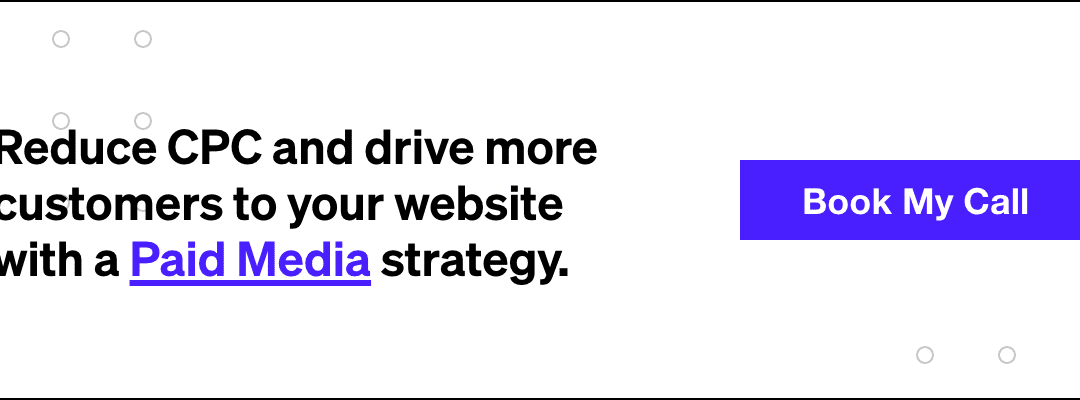A few years ago, PR Newswire shared an interesting statistic: 92% of first-time visitors to a brand website aren’t there to make a purchase. They’re there to browse.1
For companies, this means it’s advantageous to send strategic messages to leads in the form of email retargeting and email remarketing—two marketing strategies that are designed to bring momentum to the company-customer relationship. Without them, the e-commerce landscape would be a graveyard of abandoned carts and every user would become “the one who got away.”
Retargeting and remarketing can both be vital features of any digital marketing campaign and strategy, though the two terms are often mistaken for one another. Let’s unpack the key distinctions between the two and how brands can decide which to leverage to reach their next stage of growth.
What is retargeting?
Retargeting is the act of advertising to a consumer after they’ve visited a business’s website or social media profile, bounced, and are out and about online. (They can also be used to retarget consumers who already exist in a business’s database, like a newsletter subscriber.) Paid retargeting ads for the business will continue to pop up on partner sites within seconds, all with the goal of keeping the brand at the forefront of a user’s mind.2
There are two main ways a company can initiate a retargeting campaign strategy:
- Pixel-based retargeting – Pixel-based retargeting refers to targeting ads shown to users who’ve already visited a company’s website. They may already be a part of a business’s database or they might be a completely new potential customer. This strand of retargeting can be used any time a user clicks “Accept Cookies” or if they have a pixel installed on their browser. Cookies and pixels track online behavior and allow for relevant ads, like pop-ups or banners, to be displayed on the other sites they visit.3
- List-based retargeting – This form of retargeting involves zeroing in on users who may already have a foot in the funnel (e.g. being part of a lead database).4 Like remarketing, it can only be employed if a company has a user’s email or mobile number, but it can enable ads to be displayed on platforms from Instagram to LinkedIn. Common list-based retargeting strategies include offering users a free trial or discount on a first purchase.
It might seem that showing an ad again and again would trigger feelings of intrusion, if not prompt a consumer to complain. And while this certainly can happen, the data shows retargeting is remarkably effective for two reasons:
- The “mere-exposure effect” – The success rate of retargeting is attributed to what’s known as the mere-exposure effect. The basic premise here is that the more a person sees something, the more affinity they’ll develop for it.
- Brand awareness – Retargeting enhances a business’s exposure. The more familiar and recognizable a brand becomes, the greater a users’ trust, and the higher their likelihood of converting.5
What is remarketing?
In some ways, remarketing can be thought of as a form of retargeting that’s executed vis-a-vis a single communications channel: email.
Instead of “targeting” a new consumer on the sites and platforms a user frequents after pausing on a business’s page, this strategy involves sending out an email to previous customers and/or email subscribers that says, “Hey, remember me? Here’s why you need me in your life.”
In sum, remarketing campaign efforts are used to reignite the interest of inactive users, subscribers and/or followers. They’re useful in various scenarios, most commonly:
- Reminding users of an abandoned shopping cart.
- Alerting them to an upcoming sale or promotion.
- Introducing them to a new (or new to them) product or service.
Remarketing campaign tactics have been around long enough to appear somewhat blah—but they remain incredibly effective. Even so, email can be a tremendously versatile channel for businesses that wield it wisely.
Some other ways to drive favorability with users include:
- Offering complimentary shipping.
- Inviting a recipient to an exclusive loyalty program.
- Telling a user how many loyalty points they’ve accrued, and how to cash them in.
Remember, users encounter remarketing frequently—a birthday email from the retailer we bought from two years ago, or a reminder praising our good taste with the six cute tops we just added to our shopping cart all fall under the umbrella. But when brands can deploy the tactic in a way that’s helpful (rather than annoying), it can be a brilliant tool for compelling users to follow through.
Key differences between retargeting and remarketing
Ultimately, the distinction between retargeting and remarketing comes down to three main factors:
- Messaging channel – Retargeting uses targeted, relevant advertisements that surface across multiple sites and social media platforms. The strategy can be executed in paid ads as well as more organic channels like email.
- Target – Retargeting is primarily used to attract users who are newer to a business, whereas remarketing is used to rekindle engagement with existing ones. Where retargeting focuses on acquisition, remarketing is geared toward retention.
- Paid vs unpaid – Retargeting employs paid advertisements; remarketing does not. That said, this doesn’t necessarily mean remarketing is a more economical choice for brands (marketing dollars are routinely spent on remarketing campaigns, from seasonal promotions to introducing a new product).
Benefits of retargeting
One of the biggest boons of retargeting campaigns is in helping businesses connect with entirely new consumers. And even aside from expanding reach, retargeting can also teach brands about who their customers are with greater nuance.
In addition to helping foster and refine customer relationships, this strategy is a smart business decision for brands who want:
- Marketing precision – Posting targeted ads in the vast, bottomless internet sans strategy can all too easily translate to dollars down the drain. Retargeting speaks directly to leads and brands’ target audience, which can help stabilize and grow brands’ marketing ROI.
- More exposure – From Twitter to Facebook, retargeting grants businesses the ability to showcase their ads on some of the most high-traffic platforms online.
- More user engagement – A well-placed, customized banner ads that speak to a specific niche of users can increase their likelihood of exploring a business’s site. In some cases, merely appearing in a digital venue a target customer frequents can establish a sense of common ground between brand and user.
Benefits of remarketing
Remarketing is the go-to strategy when a brand is looking to bring consumers back into the fold. It’s also an advantageous tactic for businesses that want:
- More variety – Remarketing campaigns can be sculpted to champion whatever KPIs a brand has set from quarter to quarter. Email remarketing presents a nearly infinite canvas for incentivizing engagement creatively. From sending a fun quiz to users’ inboxes to letting VIP members peek into an upcoming subscription box, brands have limitless freedom to create campaigns in response to data as they acquire it.
- CTA follow-through – …aka, no abandoned carts. There are dozens of reasons a user might abandon their cart, from comparing prices with other brands to simply getting sidetracked. Remarketing helps nudge them in the right direction—sometimes by providing a simple reminder, and others by incentivizing the shopper by offering a discount or letting them know the item is low in stock.
The main benefit of remarketing is helping companies nurture the relationships they have with their customers. And because modern marketing revolves around relationships rather than coercion, it’s a crucial strategy for brands to keep in their back pockets.
Remarketing vs retargeting: which one should a brand use?
So whether you choose to target a new website visitor or an existing customer, retargeting and remarketing can both be great strategies. Deciding between remarketing and retargeting is a matter of context:
- When a brand’s main goal is to broaden its user base and amplify brand awareness, retargeting is an excellent tactic to use.
- When a brand’s main goal is to improve customer retention with a cost-effective strategy (since retaining existing customers often requires less spend than attracting new ones) remarketing may be the way to go.6
For many brands, however, using both strategies is the best way to fast-track growth marketing when looking at the big picture, for the long haul.
Retargeting and remarketing: discover Power Digital’s difference
Retargeting and remarketing are both viable practices for businesses that are serious about increasing their visibility online. But without a marketing strategy locked in, it is possible to be overexposed (or exposed to the wrong audience).
At Power Digital, we help brands bond with customers by devising growth marketing strategies tailor-made for our clients. Whether it’s revamping your paid marketing strategy pr retargeting joining the latest surge on TikTok, we leverage data from our proprietary technology nova, and call on award-winning creative to help companies find their voice and charm their audience.
If you’re a business looking for a full-service marketing partner with a 360º of the digital playing field, keep retargeting, remarketing, and much more on target by scheduling a consultation with us today.
Sources:
- PR Newswire. Study: 92 percent of consumers visiting a retailer’s website for the first time aren’t there to buy. https://www.prnewswire.com/news-releases/study-92-percent-of-consumers-visiting-a-retailers-website-for-the-first-time-arent-there-to-buy-300390086.html
- Forbes. What is retargeting and why is it important? https://www.forbes.com/sites/forbesagencycouncil/2020/05/20/what-is-retargeting-and-why-is-it-important/?sh=3f553c3e7212
- Indeed. Retargeting vs. remarketing: definitions and differences. https://www.indeed.com/career-advice/career-development/retargeting-vs-remarketing
- SEM Rush. The 5 rules of retargeting: personalization and customization at its best. https://www.semrush.com/blog/the-5-rules-of-retargeting-personalization-and-customization-at-its-best/
- Forbes. To convert more customers, focus on brand awareness. https://www.forbes.com/sites/forbesagencycouncil/2019/10/22/to-convert-more-customers-focus-on-brand-awareness/?sh=259b5c872075
- Forbes. 12 smart ways to lower the cost of customer acquisition. https://www.forbes.com/sites/forbescoachescouncil/2020/11/16/12-smart-ways-to-lower-the-cost-of-customer-acquisition
The post Retargeting vs remarketing: what’s the difference? appeared first on Power Digital Marketing.
Article From: "Power Digital" Read full article
 SERPCOM is a full-service Boston digital marketing agency focused on improving online visibility, increasing traffic, raising revenue and providing SEO services.
SERPCOM is a full-service Boston digital marketing agency focused on improving online visibility, increasing traffic, raising revenue and providing SEO services.
SEO-first: A fundamentally better approach to online marketing.
Digital Marketing | SEO | Web Design & Development | Search Engine Marketing

SERPCOM is a full-service Boston digital marketing agency focused on improving online visibility, increasing traffic, raising revenue and providing SEO services. SEO-first: A fundamentally better approach to online marketing.
Digital Marketing | SEO | Web Design & Development | Search Engine Marketing
SERPCOM is a full-service Boston marketing agency focused on improving online visibility, increasing traffic, raising revenue and providing SEO services for leading brands.
Maximize the value of your website and turbo charge your online marketing efforts with SERPCOM. Call or click the button and start making the web work for you.
Just click on the Phone Number to dial on your phone:





